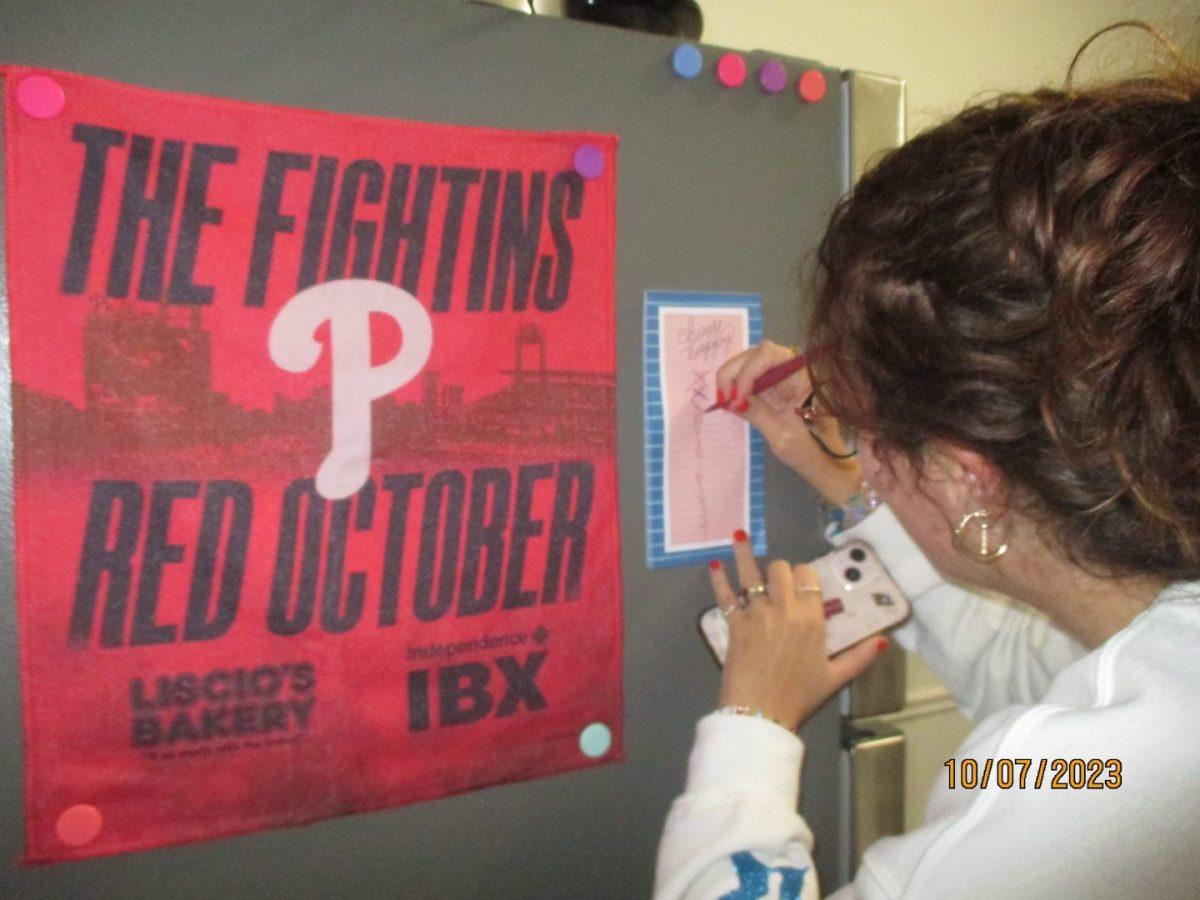The decision made regarding what the university believes to be a “bias incident,” reported by The Hawk in the Nov. 28 article “Racist slur left on students’ dorm room door,” has affirmed threatening and dehumanizing language on campus. The safety of black students, along with the safety of other marginalized and minoritized student on campus, has also been compromised.
As a black student at St. Joe’s, the story of the racial slur that was written in Villiger Residence Center was absolutely disheartening, but not a surprise. I hear about incidents like these all the time.
Even more upsetting is the administration’s response after The Hawk reported on this incident. Very little was done to support these women, to protect them, or to provide them with more information about the investigation.
I truly feel horrible for these two women because even after reporting their experience according to the university’s community standards process, I feel they haven’t been given the justice they deserve.
The Student Handbook defines a bias incident as “[referring] to conduct, speech, images, or expression that demonstrate conscious or implicit bias which targets individuals or groups based on, but not limited to, the protected statuses.”
Also in the Student Handbook, a hate crime is defined as “any crimes that manifest evidence that a victim or group was selected because of actual or perceived race, gender, gender identity, religion, sexual orientation, ethnicity, national origin, or disability.”
It seems that the only difference between a bias incident and a hate crime is the distinction that “crimes [must] manifest evidence.” The explanation for bias incidents does not specify that criteria for defining an act as a bias incident. And the definition of a hate crime offers a convoluted explanation that a person must be first found guilty of a criminal offense before a crime can be labelled as a hate crime.
Based on the administration’s actions in response to the Sept. 28 incident, intent is supposedly derived from knowledge. If the perpetrator apparently did not have knowledge of the racist meaning of the word coons, then is this implicit? And, if it’s implicit, then is there no intent?
There is no written and clear understanding of what the policy is for bias incidents. There are though, clearly communicated policies for harassment, discrimination and sexual offenses. The policy regarding bias incidents, is vague and confusing, especially if we are only deriving it from what seems to be a case by case basis.
So, not only do we not know what bias incidents are and how severe or not severe they are, we also don’t have an explicit understanding of what intent is.
So, perhaps it is because of the vagueness of the policy and definitions, that the administration has responded in the way that it has.
This was an act of vandalism on the door of two students of color, and it is a historically racially derogatory word that is threatening and dehumanizing. The word “coon” has a direct connection to the history of minstrelsy. “Coon” was used to caricature black people as shiftless, lazy and ignorant. There is no way that the university should be able to square this language with an outdated reference to a Nickelodeon TV show.
Diminishing this incident as a simple “bias incident” speaks volumes to the ways in which the university has decided to try and sweep this incident – sweep this racist sentiment and antagonism, under the rug.
And with all due respect to university leaders, a promotion of Jesuit values and a spiel about how St. Joe’s is a university dedicated to inclusion and diversity means nothing and is incredibly hollow when the action of the administration and its policies downplay this situation.
This plug about the search to hire a new diversity officer, for example, that will work with administration to promote inclusion and diversity on this campus is a band-aid for a much more pressing problem and is an attempt to square the actions that the administration has taken.
I am profoundly disappointed in St. Joe’s.
I am profoundly disappointed in the cowardice that the administration displayed in the face of a situation that should have been communicated to the St. Joe’s community moments after administrators were made aware of it.
I am profoundly disappointed in the policy that was seemingly written to remain vague and protect the institution over the student body it is supposed to be housing and educating.
Going forward, the administration should listen to the student body and act in ways that reflect the student body’s very clearly communicated anger around situations like these. The administration should not prioritize the image of the university over the safety of its students.
The Jesuit value is cura personalis, care for the whole person, not care for the institution.
















































